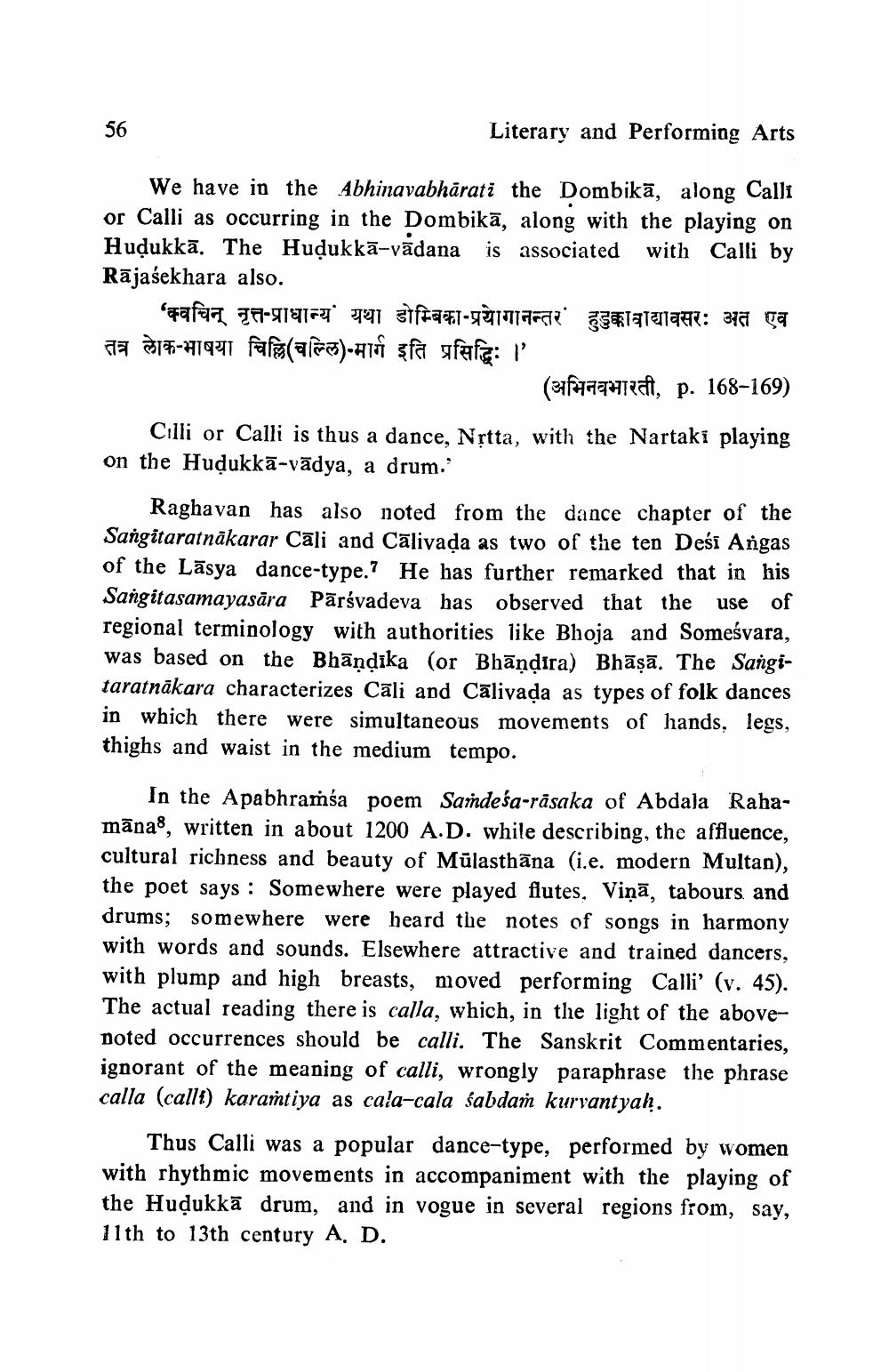________________
Literary and Performing Arts
We have in the Abhinavabhārati the Dombikā, along Calli or Calli as occurring in the Dombikā, along with the playing on Hudukkā. The Huļukkā-vādana is associated with Calli by Rājasekhara also.
'क्वचिन् नृत्त-प्राधान्य यथा डोम्बिका-प्रयोगानन्तर हुडुक्कावाद्यावसरः अत एव तत्र लोक-भाषया चिल्लि(चल्लि)-मार्ग इति प्रसिद्धिः ।'
(21f9qhizat, p. 168–169) Cilli or Calli is thus a dance, Nýtta, with the Nartaki playing on the Hudukkā-vādya, a drum.'
Raghavan has also noted from the dance chapter of the Sangitaratnākarar Cāli and Cālivada as two of the ten Deśí Angas of the Lāsya dance-type.7 He has further remarked that in his Sangitasamayasāra Pārsvadeva has observed that the use of regional terminology with authorities like Bhoja and Someśvara, was based on the Bhāņņika (or Bhāņạira) Bhāṣā. The Sangitaratnākara characterizes Cāli and Cālivada as types of folk dances in which there were simultaneous movements of hands, legs, thighs and waist in the medium tempo.
In the Apabhramśa poem Saideśa-rāsaka of Abdala Rahamāna', written in about 1200 A.D. while describing, the affluence, cultural richness and beauty of Mūlasthāna (i.e. modern Multan), the poet says : Somewhere were played flutes. Viņā, tabours and drums; somewhere were heard the notes of songs in harmony with words and sounds. Elsewhere attractive and trained dancers, with plump and high breasts, moved performing Calli' (v. 45). The actual reading there is calla, which, in the light of the abovenoted occurrences should be calli. The Sanskrit Commentaries, ignorant of the meaning of calli, wrongly paraphrase the phrase calla (callt) karamtiya as cala-cala sabdam kurvantyah.
Thus Calli was a popular dance-type, performed by women with rhythmic movements in accompaniment with the playing of the Huļukkā drum, and in vogue in several regions from, say, 11th to 13th century A. D.




